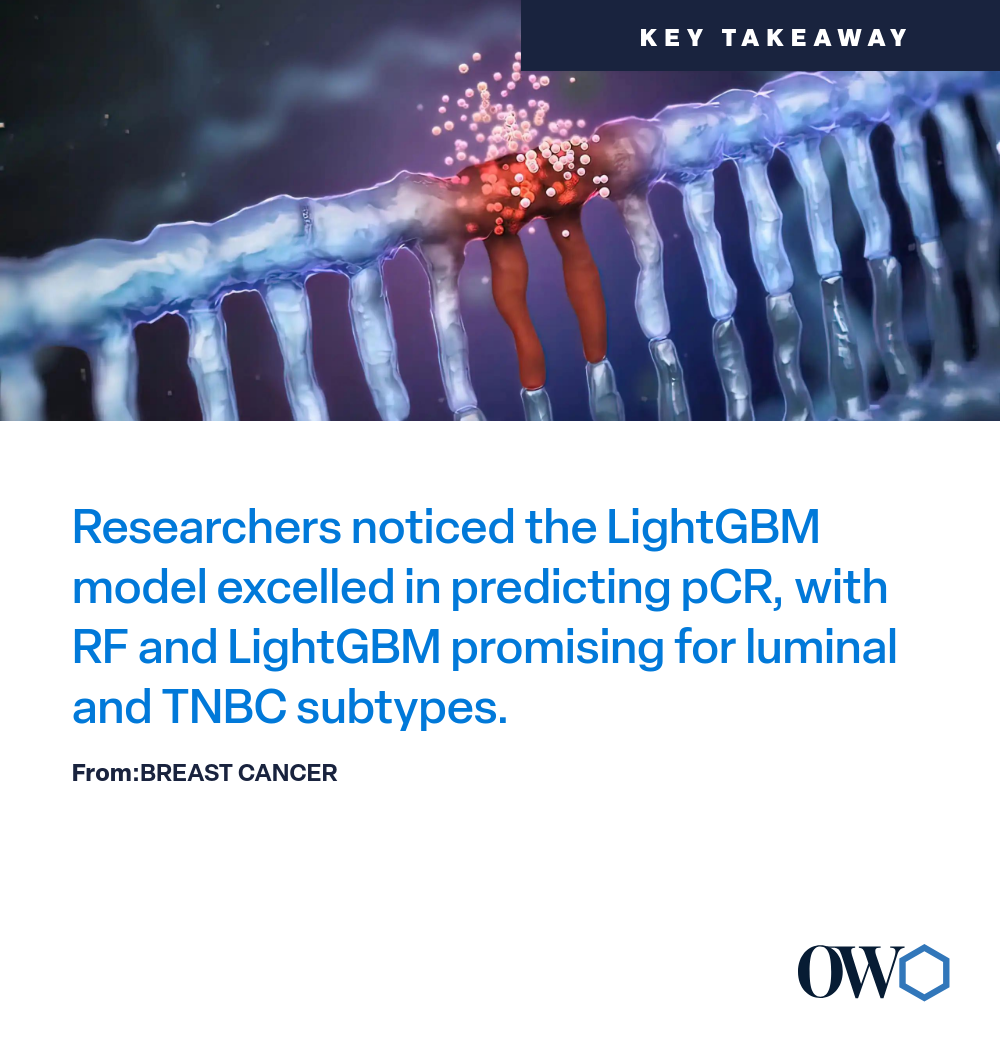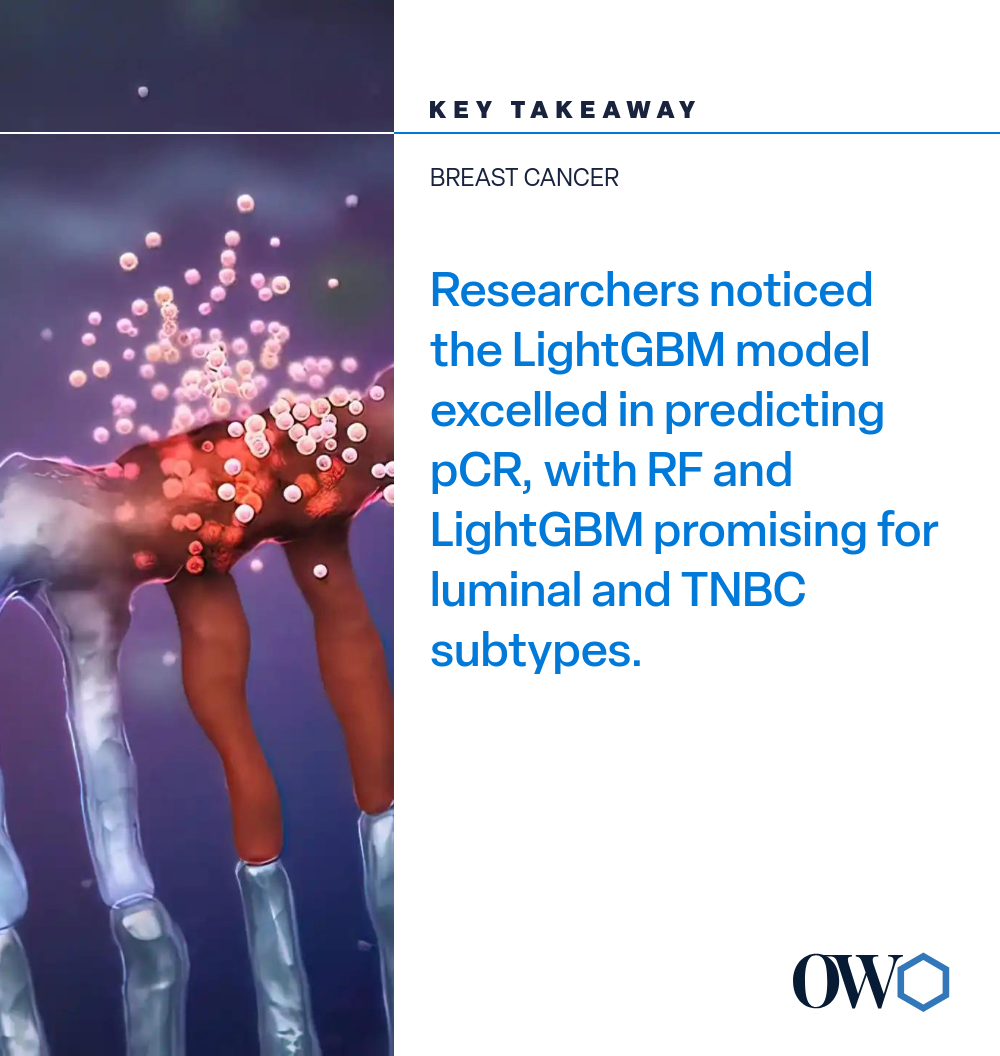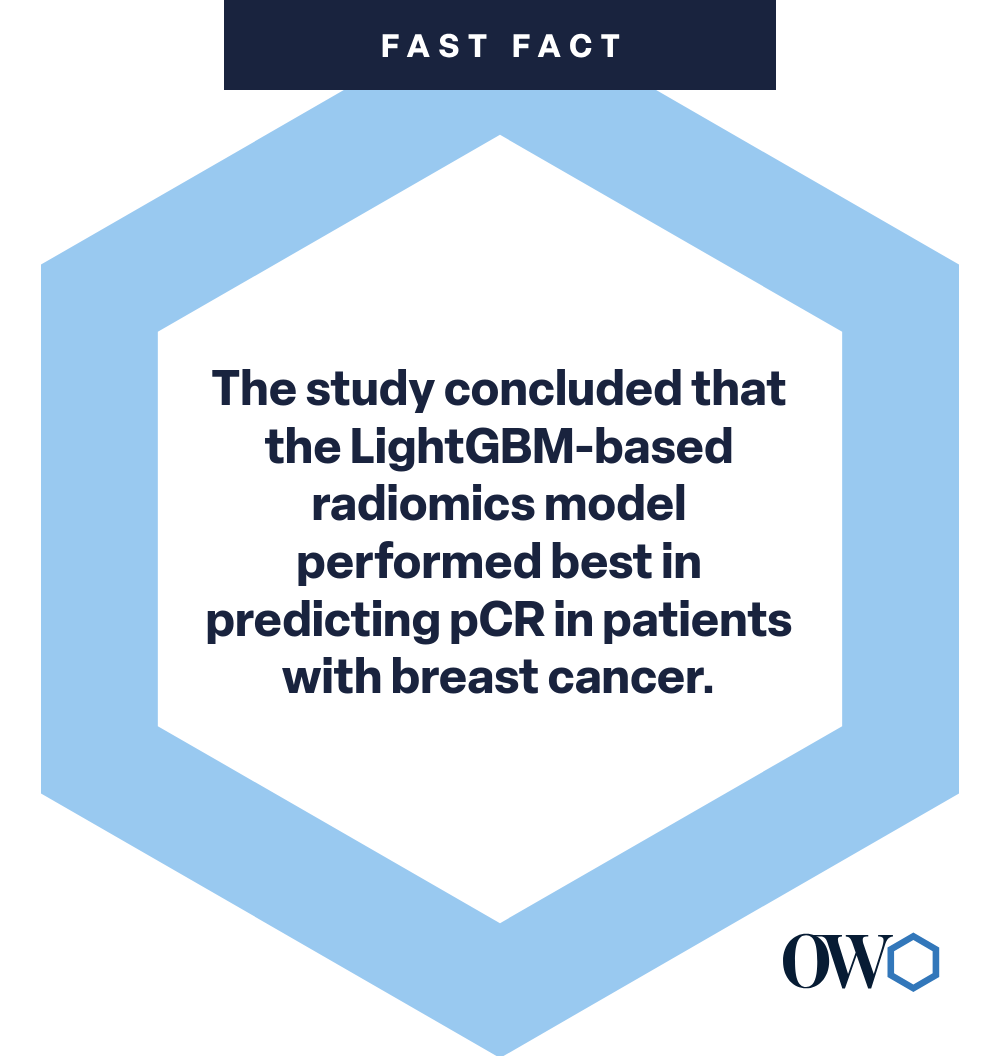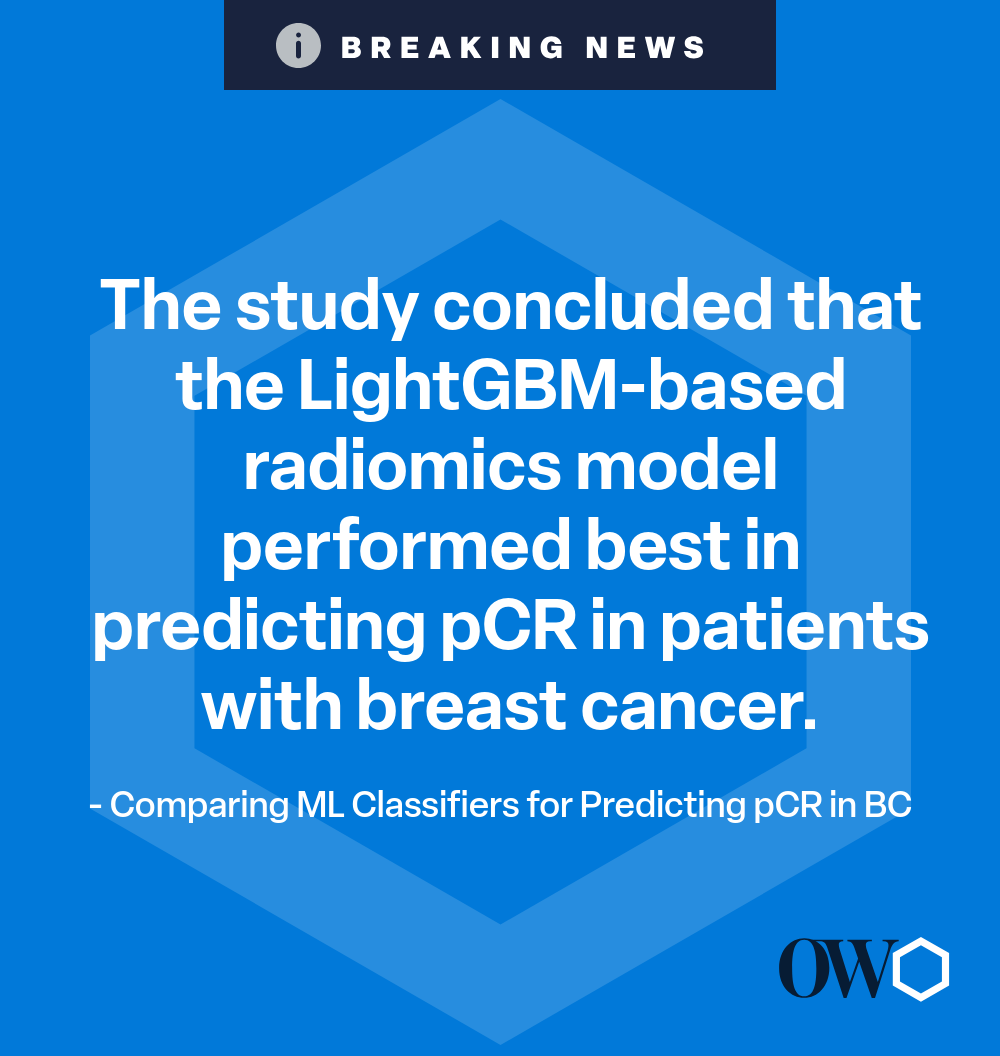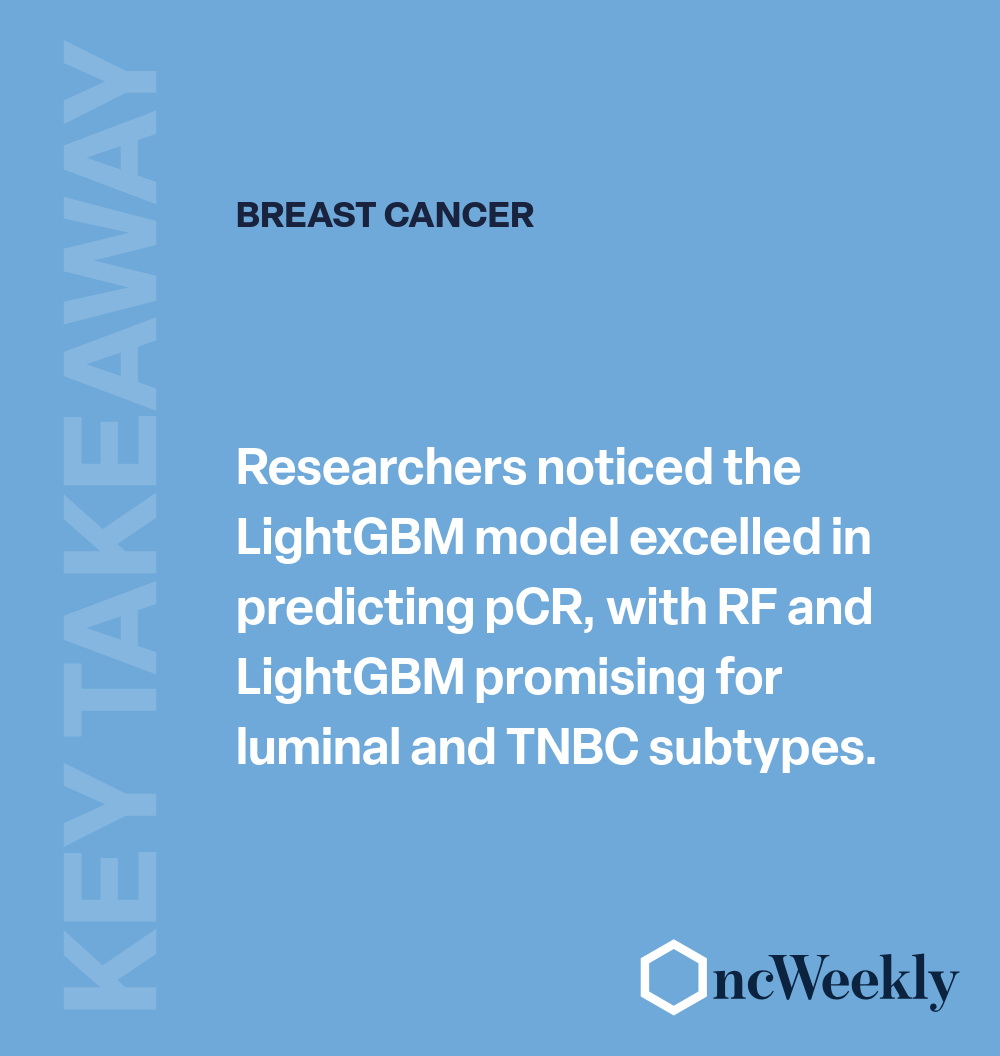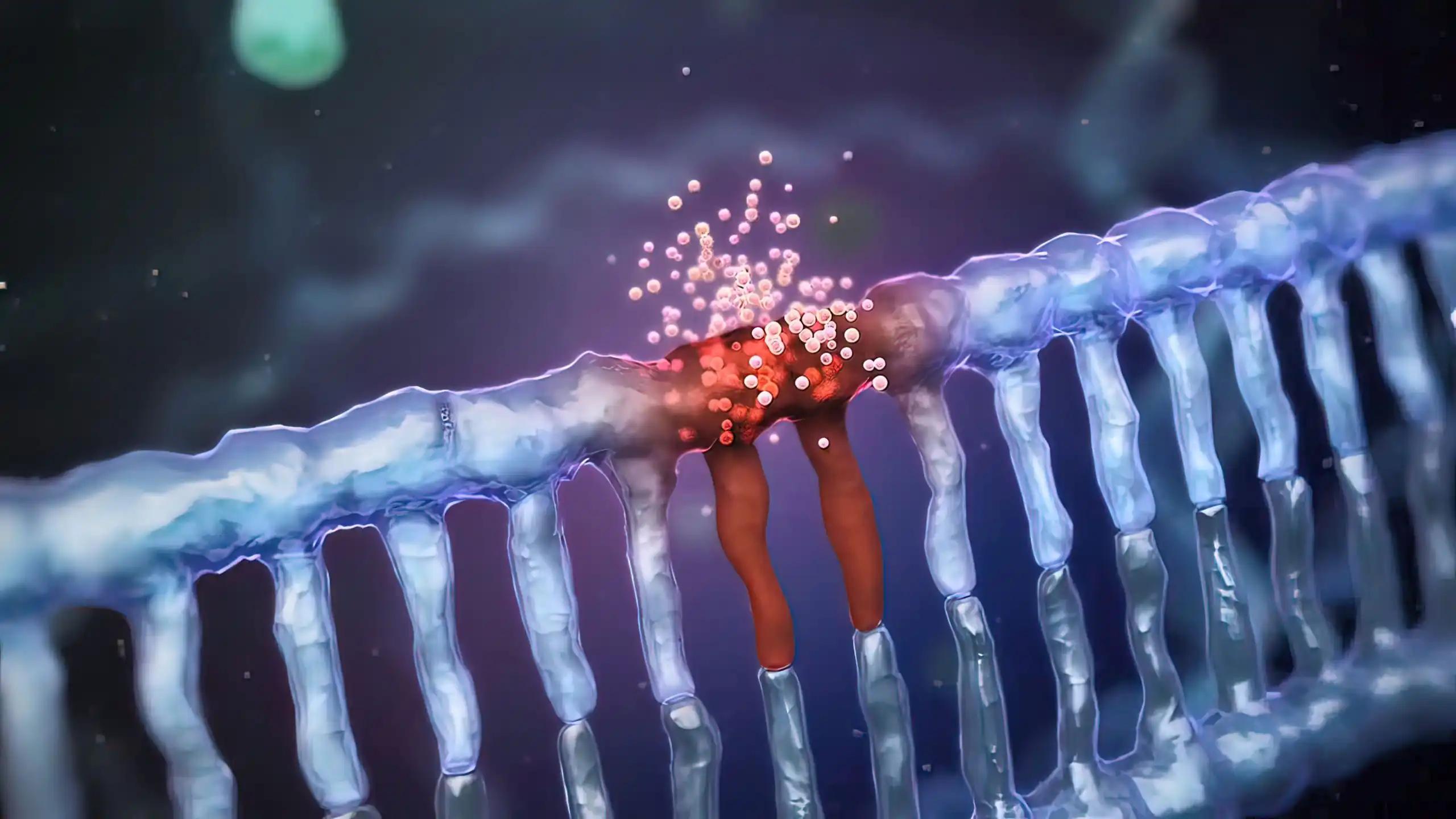KEY TAKEAWAYS
- The study aimed to compare the performance of ML classifiers in predicting pCR in BC using radiomics from pre- and post-contrast T1WI.
- Researchers noticed the LightGBM model excelled in predicting pCR, with RF and LightGBM promising for luminal and TNBC subtypes.
Machine learning classifiers are increasingly used to create predictive models for pathological complete response (pCR) in breast cancer (BC) after neoadjuvant therapy (NAT). Few studies have compared the effectiveness of different ML classifiers.
Xue Li and the team aimed to evaluate the radiomics models based on pre-and post-contrast first-phase T1 weighted images (T1WI) in predicting BC pCR after NAT and compared the performance of ML classifiers.
They performed an inclusive analysis involving 281 patients undergoing NAT from the Duke-BC-MRI dataset. Radiomic features were extracted from pre- and post-contrast first-phase T1WI images. The Synthetic Minority Oversampling Technique (SMOTE) was applied to address the class imbalance, and the dataset was then randomly divided into training and validation groups in a 7:3 ratio.
Radiomics models were built using selected optimal features. Machine learning classifiers, including support vector machine (SVM), random forest (RF), decision tree (DT), k-nearest neighbor (KNN), extreme gradient boosting (XGBoost), and light gradient boosting machine (LightGBM), were evaluated. Predictive performance was assessed using receiver operating characteristic curves.
About the performance of classifiers, LightGBM performed best in predicting pCR [area under the curve (AUC): 0.823, 95% confidence interval (CI) [0.743-0.902], accuracy 74.0%, sensitivity 85.0%, specificity 67.2%]. During subgroup analysis, RF was most effective in pCR prediction in luminal BC (AUC: 0.914, 95% CI [0.847-0.981], accuracy 87.0%, sensitivity 85.2%, specificity 88.1%). In triple-negative breast cancers (TNBC), LightGBM performed best (AUC: 0.836, 95% CI [0.708-0.965], accuracy 78.6%, sensitivity 68.2%, specificity 90.0%).
The study concluded that the LightGBM-based radiomics model performed best in predicting pCR in patients with BC. Additionally, RF and LightGBM showed promising results for predicting pCR in luminal and TNBC, respectively.
The study received no funds.
Source: https://pubmed.ncbi.nlm.nih.gov/39026540/
Li X, Li C, Wang H, et al. (2024). “Chen M. Comparison of radiomics-based machine-learning classifiers for the pretreatment prediction of pathologic complete response to neoadjuvant therapy in breast cancer.” PeerJ. 2024 Jul 15;12:e17683. doi: 10.7717/peerj.17683. PMID: 39026540; PMCID: PMC11257043.
